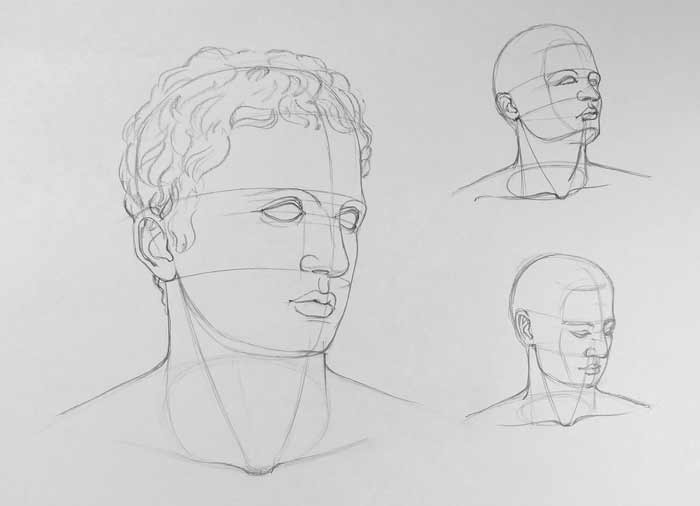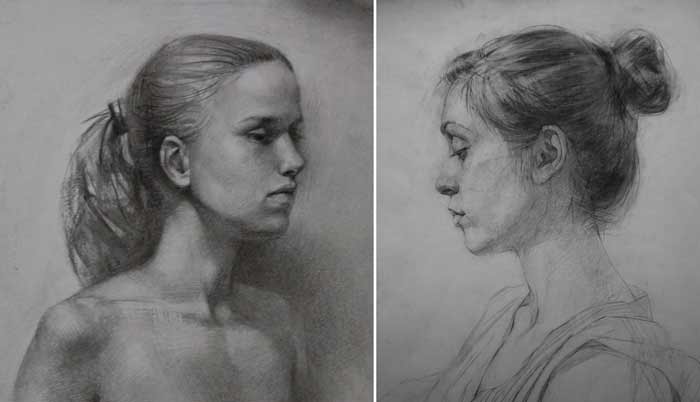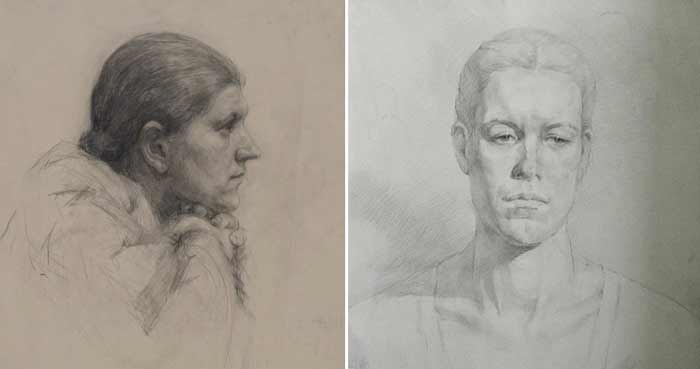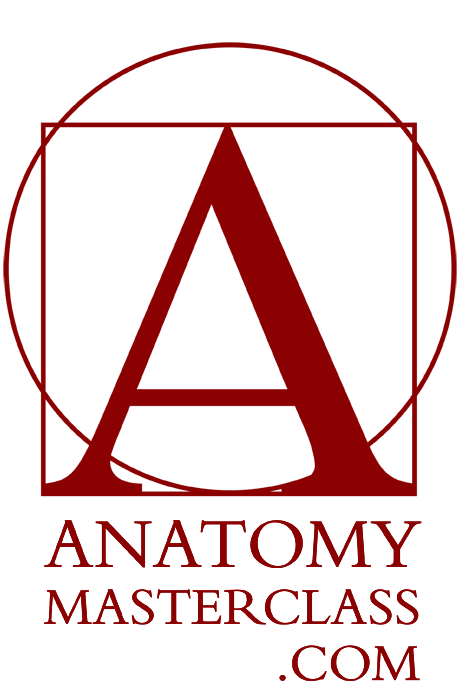Proportions of the Head
Proportions of the Head
Anatomy Lesson 6 – Part 4
In this video lesson, you will discover the main proportions of the head every portrait artist must know.
Human Head Proportions
There are two important lines you need to depict in constructive drawing are the vertical line of the face, which is the symmetry line, and the eye-line.
The eye-line divides the height of the head in half.
Another important line of the head is the brows-line.
There is one more line that is an important landmark for a portrait artist – the line of the base of the nose. The distances between this line to the bottom of the chin and the eyebrows are equal to each other.
The ear is located between two lines – the base line of the nose and the line of the eyebrows. Its vertical axis – the line where the ear connects to the head is not completely vertical, but is tilted from the vertical position as I am showing by pencil.
The width of the neck is approximately equal to half of the head’s height.
When drawing the shoulders, make sure they are naturally located on the same level by drawing a curved line from shoulder to shoulder.



Another landmark every portrait artist must know is the neck pit. This is the place just above the breastbone between the two collarbones. Its location is a great indicator where the neck muscles are connected to the body. This pair of neck muscles forms the “V” shape that travels upward and inserts into the skull behind ears.
When drawing the eyes, keep in mind that the distance between the eyes is equal to the width of one eye.
As this portrait is from a three-quarters view, these distances are foreshortened in perspective.
The upper eyelid wraps around the eyeball. You may actually draw a ball that marks the eye’s size; this will help you depict the eyelid more realistically.
The lower eyelid also wraps around the eyeball.
Please note that the upper and lower eyelids are not symmetrical. You can see that the outmost top point of the upper eyelid does not lie right above the lowest point of the lower eyelid.
Two other virtual lines that help with constructive drawing of the eyes, are the top and bottom lines of the eyes.
These two lines ensure that the eyes are positioned accurately on the same level. As you can see, those lines are slightly curved and travel slightly downward. This is because they repeat the cylindrical shape of the face and are seen in perspective from above the horizon level.
The nose can be simplified as a geometrical form– a prism, or low-polygon geometrical shape. You can actually draw this geometrical object in perspective and then fine-tune its contours. If your skills are adequate, just keep that shape in mind and draw the nose constructively.
According to the classical canon of face proportions, the width of the nose wings is equal to the distance between the eyes.
Regarding the position of the mouth, you must remember that the distance between the lips and the base of the nose is twice smaller than to the bottom edge of the chin.
The head is turned to the side, therefore, the portion of the mouth located further away from the viewer will appear foreshortened in linear perspective.
When drawing the corners of the mouth, and when deciding the width of the mouth, it is good practice to compare their location in relation to the eyes. Draw in your mind, or in the actual drawing, virtual vertical lines that travel from the mouth corners upward to the eyes. Next, compare the location such helping lines will intersect the eyes. Check the same proportion on the model.
The shape of the upper lip resembles the cupid bow. Its upper outline resembles a widely-spread “M”.
Did you know that the groove centered below the nose and above the upper lid is formed very early in the development of a human embryo? In fact, it appears before most other body parts. This is where the two edges of a flat embryo fuse together, forming a three-dimensional shape of the head.
The lower lip of the mouth is shorter than the upper one. It also has a different shape and not a mirror reflection of the upper lip.
[ The full lesson is avaibale to Anatomy Master Class members ]
Simple Pricing, No Surprises
To learn more about proportions of the head, enrol in the Anatomy Master Class
One-time payment - Only $97 USD
ENROLL NOW



